What is Bench Chemistry?
Bench chemistry is the type that is performed in the most traditional way — the scientist mixes and handles chemicals directly, not employing any of the high-tech devices or theoretical approaches that may be associated with the most state-of-the-art aspects of the discipline. Essentially, it involves experiments and demonstrations that can be done with a few chemicals; some test tubes, flasks and beakers; and a Bunsen burner. The stereotypical image of a scientist in a white lab coat pouring chemicals from one test tube to another is a perfect example of bench chemistry. “Wet chemistry” is sometimes used as a synonym for this activity; however, it is an industry term with a much more flexible definition, and may also refer to the use of high-tech equipment that is generally not found at a laboratory workbench.
Techniques
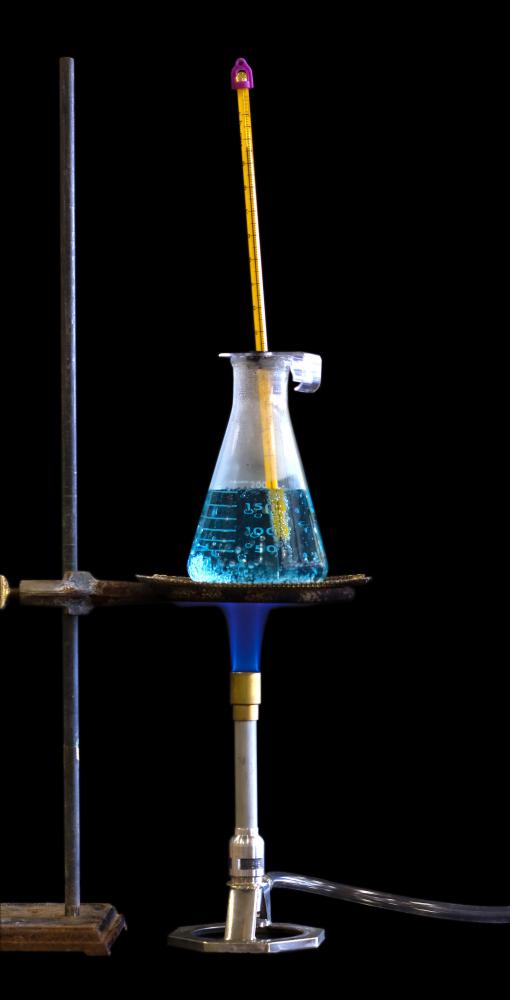
The term “bench chemistry” covers many different scientific techniques that are employed in a laboratory. A general rule of thumb is that if it is a method that can be easily practiced at a workbench without a computer doing most of the calculations and analyses, then it is a bench chemistry technique. Analytical methods include titration, gravimetric analysis, flame tests and borax bead tests. Samples of elements or compounds may also be prepared at the workbench. Experimentation, or simply mixing things together to see what happens, is often a bench activity, and many important discoveries continue to be made in this way.
Analytical Methods
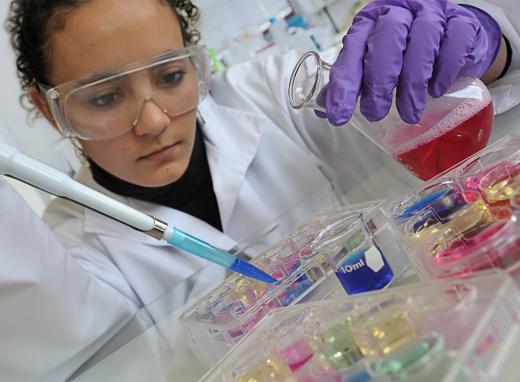
Much of chemistry is about analysis: investigating a sample of material to determine what elements or compounds it contains. While there are instruments, such as spectrometers, that can be used to perform detailed analyses, there are also a wide variety of straightforward bench tests that can be done simply by mixing one or two substances, or heating something in a Bunsen flame. These procedures may be old fashioned, but they do not require expensive equipment, and can teach students a lot about chemistry. In the past, they have led to important breakthroughs, such as the discovery of new elements.
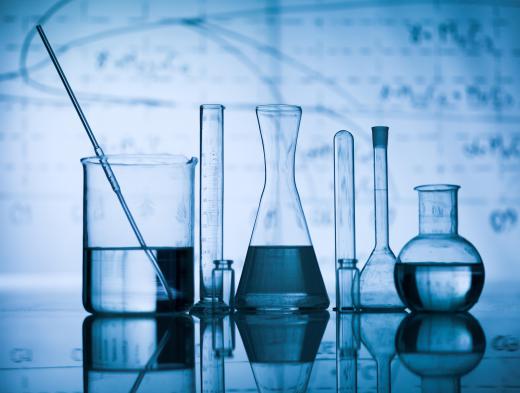
Titration — sometimes called volumetric analysis — is a method used to establish the concentration of a dissolved compound. For example, if a chemist wants to know how much hydrochloric acid is present in a solution in water, she can add an alkaline solution, such as sodium hydroxide, of known concentration until the resulting solution is neutral. It is then possible to calculate the concentration of the hydrochloric acid from the volume of sodium hydroxide solution used.
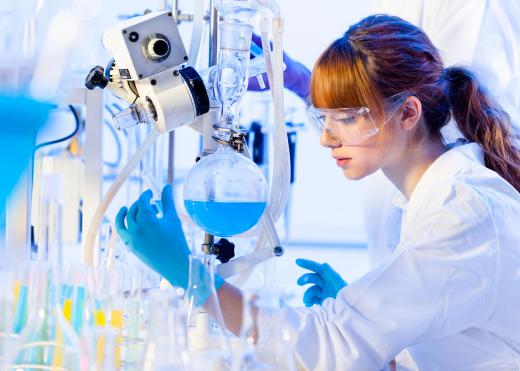
Gravimetric analysis relies on mass rather than volume, and involves weighing the compound or element of interest, after isolating it from a sample. For example, to find out the amount of a metal present in an ore, a chemist might first dissolve the ore in an acid, then add a base that reacts with the metal to form a compound that is not soluble. This will come out of the solution as a fine powder known as a precipitate, which can then be filtered and weighed. It is then possible, by knowing the atomic weights of the metal and the other elements in the precipitated compound, to determine how much metal was present in the ore.
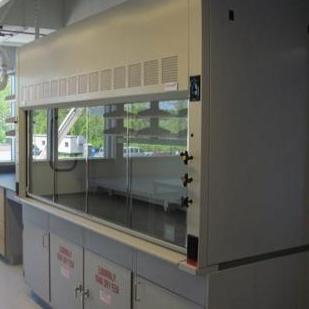
A flame test is based on the colors produced when certain metals are strongly heated in a Bunsen flame. For example, barium will give green, strontium, red, and cesium, blue. The test is normally carried out using a platinum wire with a small loop at the end, which is used to pick up a small quantity of the sample, and to introduce it to the flame.
Another way of detecting metals is the borax bead test. Again using a platinum wire loop, a small quantity of borax (sodium tetraborate), is melted in a Bunsen flame, then used to pick up a tiny amount of the sample. This mixture is then melted in the flame again to form a small, round bead. Metals present in the sample will produce beads of different colors. The color also depends on the part of the flame in which the bead is heated, and the bead may change color as it cools. From the colors produced, it is often possible to identify which metal is present.
Preparing Samples of Chemicals
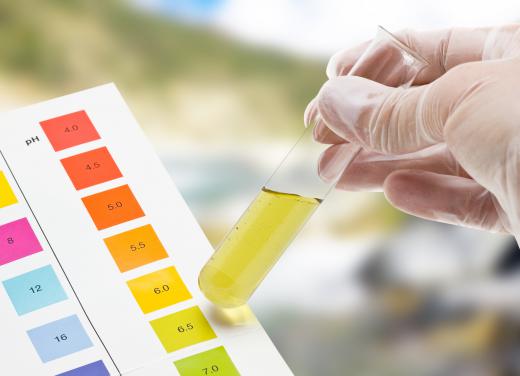
Bench methods may also be used to prepare or purify samples of particular chemicals. Distillation is a common technique. A mixture of liquids with different boiling points — for example, water and ethanol — can be separated by placing it in a flask connected to a condenser, or in a retort, and heating it to a temperature above the boiling point of one, but below the boiling point of the other. The liquid with the lower boiling point is vaporized and can be condensed and collected.
Precipitation is another method that can be used to prepare a chemical that is insoluble in water. A pure sample of calcium carbonate (CaCO3), for example, can be prepared by mixing a solution of a soluble calcium compound — such as calcium chloride (CaCl2) — with a solution of a soluble carbonate — such as sodium carbonate (Na2CO3), in a beaker. The calcium carbonate forms a precipitate at the bottom of the beaker. The other product of the reaction, sodium chloride (NaCl), which is soluble, could be obtained by evaporating the remaining liquid. This method can be used to prepare many different compounds.
The Bench
Bench chemistry gets its name from the traditional laboratory workbench. They are found in both industrial and academic laboratories, and almost everyone who learns the natural sciences will work at one of these benches at some point. They are usually stain, heat, and corrosion resistant so that chemical spills and botched experiments do not cause significant damage, and may be fitted with gas outlets to which a Bunsen burner can be attached. Some workbenches are also surrounded by ventilation systems known as fume hoods to protect users from the toxic gases that may be released during certain chemical reactions.
AS FEATURED ON:
AS FEATURED ON:
















Discuss this Article
Post your comments